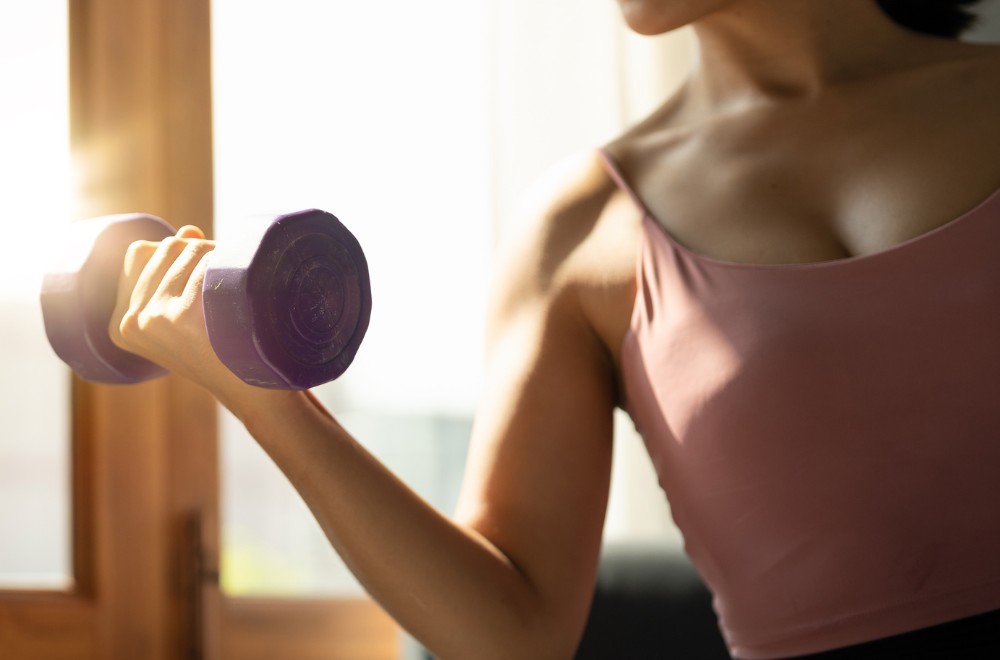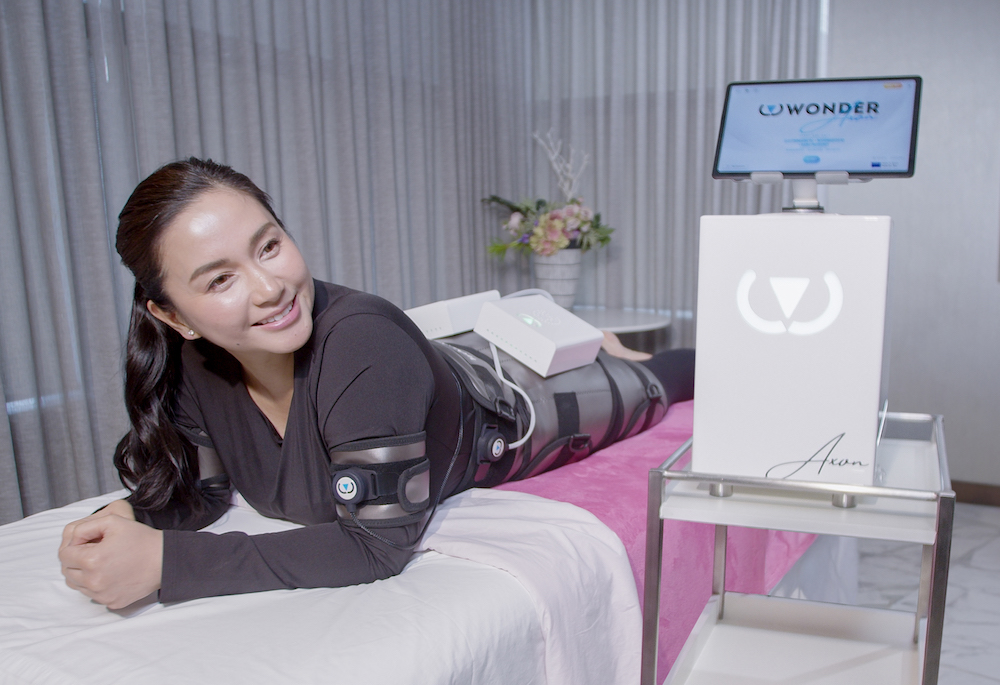Muscle loss starts in your 30s, with the amount increasing up to 8% each decade that follows. Here’s how to prevent it as you age.
Women, it’s time for us to take our bodies seriously, especially when we reach our 30s. No more excuses not to get up from our desks for a quick walk around the house or office, and no more reasons to deprive yourself of at least seven hours of sleep daily. Why? Because the less we pay attention to our bodies, the more we lose muscles in our body starting in our thirties.
Muscles are soft tissues throughout our body that are responsible for our movements, from small, mundane tasks like holding and scrolling through your phone to strenuous ones like running a marathon. They support the organ systems of our bodies, including the respiratory, urinary, and reproductive tracts.
Muscle atrophy, or muscle loss, happens when you live a sedentary lifestyle, with little to no physical activity, or when you are not eating the right food to give your body the nutrients it needs. It also develops when you’re immobile because of an injury, or if you’re dealing with neurological conditions or related diseases. Hormonal changes contribute to muscle decline, too.
Pregnancy is another factor. Our pelvic floor muscles can weaken due to stretching, and the weight of the growing fetus. Muscle loss can also happen during menopause due to estrogen decline. And, as much as many of us hate it, muscle loss comes with aging.
It starts in your early 30s, when you lose about two-percent of your muscle mass. Then that amount increases to 3% to 8% for each decade that follows. By the age of 80, it’s estimated that adults can lose between 30% and 40% of their peak muscle mass from their younger years, with the decline accelerating around the mid-60s, according to the Cleveland Clinic.

Muscle loss is often overlooked, but is a crucial aspect of our health. And if you’re not fixing it, you’re likely to end up having difficulty doing everyday activities like walking, climbing the stairs, and carrying groceries. It could also increase the risk of falls and fractures, not to mention illnesses like sarcopenia (age-related muscle loss), autoimmune diseases like ALS, and even endocrine disorders like diabetes or hypothyroidism.
However, even if you are already in your 30s or later phases of your life, there are still ways to turn things around. Dr. Preetha Kkiran, who has 25 years of experience in the nutrition and wellness industry, said that with the right habits and knowledge, you can fight muscle loss. Kkiran shared some tips during a talk about women’s health hosted by Marie France last week.
According to Kkiran, muscle reduction is part of our natural aging process, but she recommends looking after it like a metabolic organ. “Muscle mass is directly related to metabolism. More muscles mean a higher basal metabolic rate, which means more energy utilization from fat stores,” she said. “The more you invest in it, the more it is going to give you benefits later on, so consider doing that.”
How to prevent muscle loss as we age?
1. Load up on protein

The first—and probably the easiest—thing to do when you want to strengthen your muscle is to pile on protein. These amino acids are essential building blocks for repairing and constructing new muscle tissue, especially when your muscle fibers experience micro-tears from strenuous activities. Kkiran recommends “getting around 1.5 grams of protein per kilogram of body weight.”
She explained further – “So on average, anyone who’s 50 kg should be getting 1.5 grams per kilogram bodyweight. So the target should be around 20 to 30 grams of protein per meal. And here in the Philippines, you have a lot of protein-enriched food available. It’s all about what you put on your plate. Let’s try to control the carbs and put more protein.”
Besides the usual beef, pork, and chicken, protein can be found in fish, beans, tofu, low-fat yogurt, eggs, cottage cheese, milk, and nuts. Besides that, the nutritionist recommends incorporating food with unsaturated fats or “good fats” into your diet. “Unsaturated fat is a very important in maintaining your estrogen and cholesterol levels, so give the good fats to your body,” she said. Consider eating heart-healthy food like fatty fish, nuts, olive oil, and avocados that are good sources of omega-3 fatty acids.
Related story: Why eating more plants is easier than you think
Related story: Gut health? Five fascinating facts about our gastrointestinal tract and how to keep it healthy
2. Get a better night’s sleep

Maintaining a proper sleep hygiene is equally important, Kkiran said, as it allows the body to repair itself, build muscle tissue, and store energy. Lack of it can lead to reduced muscle strength and increased risk of injury. The recommended hours of sleep for adults aged 18 to 60 is at least seven per night.
Good sleep leads to good health. The wellness expert recommends considering “how dark your room is, how good your bed smells,” and how cool and quiet your environment is. She also suggests having a nightly ritual that includes dimming bright lights, listening to soft music, reading a book, or taking a bath before going to bed. “It’s all about taking care of yourself. It plays an important role,” she remarked.
Related story: Sleeping is not just for relaxation—it’s for resolution, study says
3. Stay hydrated

Water does wonders to our muscles by facilitating the transport of viral nutrients to muscle cells. Kkiran sayts it’s “extremely important” to drink an adequate amount of water daily. She recommends “30 ml of water per kilogram of body weight.” So let’s say, you weigh 50 kg., you must take in “at least 1.5 liters of water in your system every day.”
“Sips of water throughout the day helps you stay hydrated,” she continued. “It definitely helps you in steadying your metabolism and aid in burning calories even when you’re sitting or watching Netflix.”
4. Exercise and stay active

Working out, especially resistance or strength training, is one of the best ways to build muscle. When you strength train, your muscles are challenged and they become stronger. They also respond to this challenge by creating more muscle tissue.
To build muscle mass, perform exercises that continuously challenge your muscles like squats, lunges, push-ups, or those done using weights and resistance bands. The American College of Sports Medicine also recommends completing eight to 10 repetitions of one exercise for each major area of the body—legs, hips, chest, back, abdomen, shoulder and arms—two to three times a week.
Related story: Is running the new Tinder?
Related story: Can sound really heal? Here’s how vibrations affect your mind and body
5. Get a clinical muscle strengthening treatment

If you have no time or even energy to exercise, getting a muscle strengthening treatment at a certified clinic could do the trick. One example is Marie France’s Wonder Axon program, which uses an advanced body shaping and body contouring machine, called “Wonder Axon,” to strengthen one’s muscles in one go.
It uses three technologies—neuromuscular stimulation, electromagnetic field, and radio frequency—to deliver up to 60,000 deep muscle contractions in our body’s six muscle groups: legs, obliques, arms, quads, glutes, and abs. Each session last for only 25 minutes, making it ideal for those who want to strengthen their muscles but do not have the capacity to engage in high-impact physical activity.
Wonder Axon is now available in all Marie France centers nationwide. You can book an appointment through the clinic’s hotlines—09175262573 and (02) 8894 2638—or its website here.
Related story: Dermatologist-approved ways to slow down skin aging
Related story: As if we needed another reason to travel, science now says it can help slow down aging








